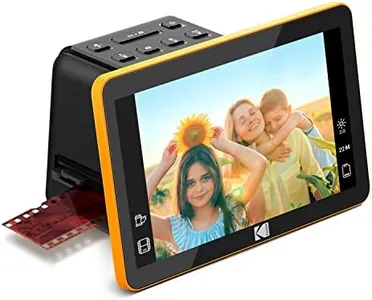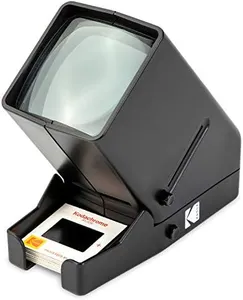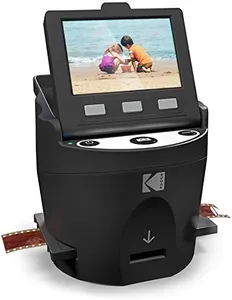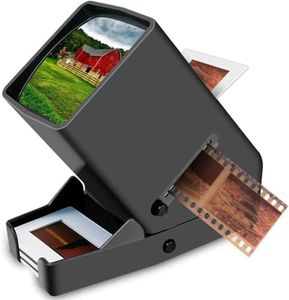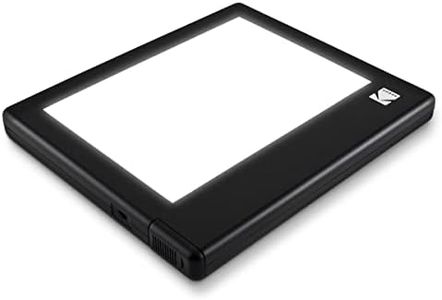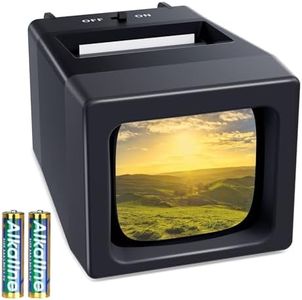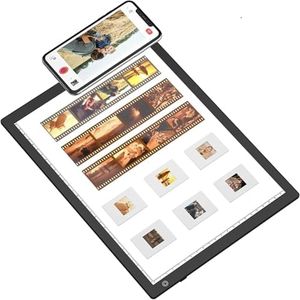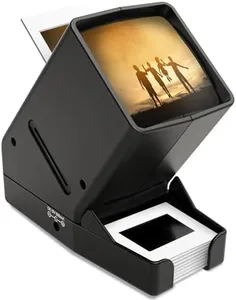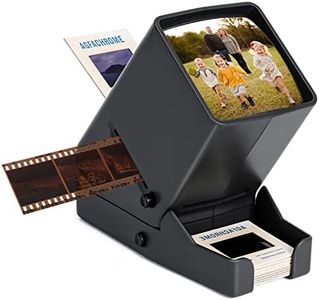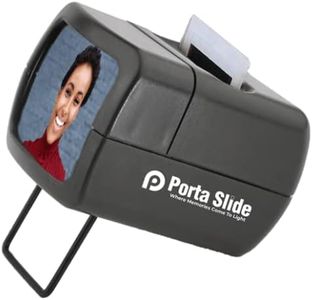We Use CookiesWe use cookies to enhance the security, performance,
functionality and for analytical and promotional activities. By continuing to browse this site you
are agreeing to our privacy policy
10 Best Slide Viewers
From leading brands and best sellers available on the web.Buying Guide for the Best Slide Viewers
Choosing the right slide viewer is all about matching your personal needs with the features that are available. Whether you’re reliving memories with old photo slides or examining scientific specimens, the right viewer can make a big difference in your experience. Start by thinking about how often you'll use the viewer, what types of slides you'll be looking at, and where you plan to use it. From there, you can focus on the features that truly matter for your situation.Slide CompatibilitySlide compatibility refers to the sizes and types of slides that the viewer can accept. Most common slides are 35mm, but there are other formats like 110, 126, or even medium format. Make sure the viewer works with the kind of slides you have. If you have a mix of sizes, look for a model that supports several types, but if your collection is only one size, you can focus on viewers made specifically for that format for the best results.
Illumination TypeIllumination type describes how the slide is lit up for viewing—typically either by using an electric light source or by relying on natural light. Electric (especially LED) illuminated viewers generally give you brighter, clearer images and can be used any time, while natural light viewers depend on daylight and are more basic. If you want to use the viewer any time of day or need consistent brightness, go with an electric option. For occasional or nostalgic viewing, a simple natural light viewer might be enough.
MagnificationMagnification tells you how much larger the slide’s image will appear when you view it. Standard viewers provide around 2x to 4x magnification, enough for most casual viewing. Lower magnification gives a broader view of the whole slide, while higher magnification can help see more detail but might show more grain. Consider what you’re using the viewer for—casual family photo viewing versus close examination for details—when deciding how much magnification is right for you.
PortabilityPortability is about how easy it is to carry and use the viewer in different places. Some viewers are lightweight and run on batteries, making them easy to use anywhere, while others need to be plugged into a wall and are bulkier. If you plan to move the viewer around the house, take it to friends’ homes, or use it on trips, a compact and battery-powered option will suit you best. But if it will stay on your desk or in a dedicated spot, a larger, plug-in viewer may offer more stable performance.
Build Quality and ErgonomicsBuild quality means how sturdy and durable the viewer feels; ergonomics is about how comfortable and easy it is to use, including inserting and removing slides. If you'll use the viewer often, look for one with solid construction and features that make slide insertion smooth and easy. For occasional use, lighter and simpler designs might be adequate.
Additional FeaturesSome slide viewers come with extra features like the ability to project the image onto a wall, digital conversion capabilities, or even simple focusing adjustments. Consider which of these features you might actually use. If you want to share slides with a group, projection or digital output can be helpful; if you simply want private viewing, these extras may not be needed.
